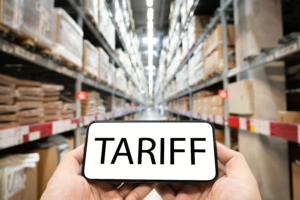
Business intelligence for manufacturers is becoming more accessible as technology evolves. And today, a top business intelligence strategy–item stratification–is no longer a best-kept secret for how manufacturing businesses are growing profitably. Many in the manufacturing space are adopting both item and customer stratification as they move toward profitable growth, and this blog will cover ways that business intelligence–as part of those models–helps define investment and sales strategies that support growth goals.
Business intelligence derived from item stratification modeling is integral to defining effective investment and sales strategies that help companies pivot from the typical defensive position of struggling to hold onto market share to proactively garnering greater market share with increasing velocity at higher margins. It is a cornerstone in promoting growth without sacrificing liquidity and in building shareholder value.
Key Concepts of Item Stratification
Item stratification analysis assesses inventory items’ potential to generate revenue and profit. The inventory items are ranked against each other as to this potential, greatest to least.
With this type of business intelligence for manufacturers, effective inventory investment and sales strategies can be devised to maximize revenue, profit growth, and inventory ROI, while ensuring customers the highest level of service and fulfillment.
Thorough planning is required to institute an item stratification process. There are a number of key concepts that must be reviewed in order to create a process that will be tailored to each individual manufacturer. Below are the key concepts to review.
Scoring and Weighting Values. These values must be tailored to each organization. Each item in inventory must be scored based on KPIs, and then those scores must be assigned weighted values. If the results seem to be disproportionately skewed, scoring and weighting values should be adjusted.
Analysis at the Local Level. Review the database structure of a company’s sales analysis and/or general ledger chart of accounts to determine the level of difficulty involved in capturing an inventory item’s performance at the local level. If sales analysis and the general ledger needs to be used to determine a transaction’s local level, cross referencing would be required.
Determining Lead Times. If possible, use the company’s ERP to calculate lead times. If an ERP is limited, lead time values can be entered manually based on historical trends.
Determining Reliable Cost to Serve (CTS). Manufacturers sometimes sell products that cost too much in terms of CTS. Determining a genuine cost to serve can sometimes be inferred by scoring items on KPIs such as order size, yield per pack, percent of returns, and percent of same day delivery or pickup. However, there may be other KPIs that a specific company has access to that could be substituted.
Standard Cost vs Actual Cost. Determine whether to identify cost of goods by capitalizing inventory cost using an implied standard cost or by charging the actual cost incurred to acquire, refine, or produce an item.
Freight Costs. Capitalizing freight cost to an inventory item in the correct proportion is critical to determining accurate gross margin per item. However, many freight cost capture procedures result in inaccuracies. Each manufacturer should determine the best approach to identify the most accurate gross margin per item.
Stratification: Critical Business Intelligence for Manufacturers
When combined with customer stratification, item stratification helps companies identify the optimum product and customer sales mix that best aligns with their core competencies, and also integrates pricing optimization and sales strategies that can successfully promote and bring that sales mix to market.
Because item stratification helps to define integrated, harmonized investment and sales plans, companies become more proactive and effective in:
· Negotiating and winning sales on terms better aligned to its self-interests and goals
· Mitigating inventory obsolescence
· Increasing inventory ROI and turn
· Accelerating the sales cycle
· Maintaining supply chains of less complexity and of greater throughput bandwidth
· Setting benchmarks and goals that support better daily decision making
Item stratification modeling helps to illuminate many of the sources of underperformance in a manufacturing company. In addition, companies that utilize item stratification gain soft benefits that are just as important. Management teams will feel more secure when they’re making decisions that affect the company’s profitability based on solid data insight as opposed to intuition. Customer satisfaction will also be improved because of more effective order and fulfillment processes.
In the end, item stratification is a powerful tool that has benefits for all the stakeholders in a manufacturing company’s operation.
The Big Picture: The Key to Success for Manufacturers In Today’s World
Manufacturers face a variety of challenges. The intense cost pressures under which many manufacturers are operating make it difficult for them to deploy solutions that address these challenges.
Business intelligence for manufacturers through modeling like item stratification shouldn’t be a difficult methodology to adopt. But due to the cost to manually onboard the process, or limitations of legacy tech stacks, or a lack of know-how and experience as to how to best exploit technology, for many manufacturers it is difficult, and they cannot avail themselves of its benefits.
That’s why it is imperative for manufacturers to ally themselves with the right technology partner who can not only provide them access to the right technology but can also teach them the key business concepts underlying the technology and support them in deploying and exploiting it to their maximum benefit.
Having the right technology partner as a resource and trusted advisor is the best path for manufacturers to cost effectively scale, leverage, and deploy effective solutions for smart inventory investment. Learn more about using item stratification by downloading our guide, “How Manufacturers Can Grow Profitably Using Item Stratification.”








